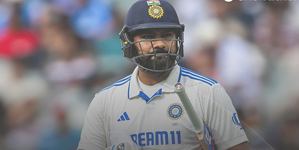Jaipur : Amid the outbreak of infectious disease in Africa, experts said on Thursday that the new and deadly Mpox strain – Clade 1B – is a major threat to children. Mpox has been declared a ‘global health emergency’ by the World Health Organization on August 15. This strain is completely different from the experience made worldwide in the year 2022. The 2022 strain was driven by Clade II, which is less dangerous. This infection was seen mainly in men who had sex with other men.
Since then, WHO has reported 99,176 cases and 208 deaths due to ampox in 116 countries. A total of 30 cases have been found in India so far. Its last case was reported in March 2024.
The number of cases and deaths in Africa has increased significantly this year, with more than 15,600 cases and 537 deaths recorded so far in 2024. This new strain is caused primarily by clade 1b which spread from animals to humans in September 2023.
Dr. Rajiv Jayadevan, co-chairman of the National Covid-19 Task Force of the Indian Medical Association, said that the pattern of spread of this strain is quite different from the cases experienced in 2022. He said that this time a large number of people are getting infected, including women and children.
Traditionally, Mpox spread through physical contact or sexual contact, as seen in the 2022 outbreak. Back then, the infection was largely restricted to men who had sex with men.
According to a report, while pediatric cases were rare in previous strains, the chances of the strain in this age group are increasing in the current times.
“Mpox poses a major threat to children, with the number of cases being higher in children than in adults,” Dr Rohit Garg, infectious disease consultant at Amrita Hospital in Faridabad, told IANS.
“Recent data have indicated an increase in these cases in pediatrics, with children showing similar symptoms to adults but potentially facing more severe outcomes,” he said.
According to WHO (2022-2024) data, as of July 2024, 1,156 (1.3 per cent) cases were reported in the 0-17 age group, of which 333 (0.4 per cent) were in the 0-4 age group. “Recently observed changes include higher transmission rates in households and schools, emphasising the need for vigilant monitoring and preventive measures,” said Rohit Garg.
This shows that we need to keep an open mind about the possible modes of transmission, Jayadevan said, amid debate over whether transmission could be through the air.
He said that the fact is that children are getting infected easily. Which suggests that both contact or respiratory infection may be potentially involved. However, this needs to be investigated.


